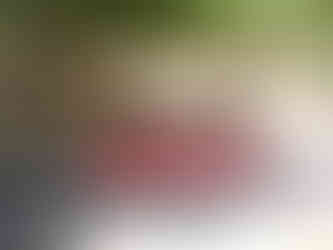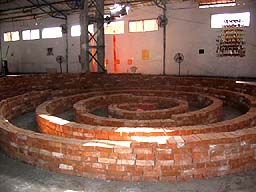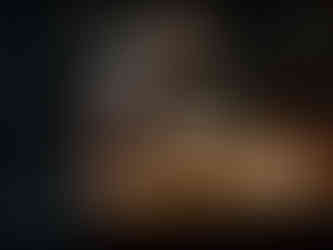Rajan Shripad Fulari: An Artist on the Move
- artamour

- May 9, 2021
- 9 min read

Rajan Shripad Fulari is an artist, curator and art academic with vast experience in the visual arts across India and abroad. He holds a degree in Fine Arts from the Goa College of Art and completed his Masters in Printmaking from MS University, Vadodara. He till recently served as Secretary, Lalit Kala Akademi, New Delhi, and is presently Assistant Professor, Printmaking Studios, Faculty of Fine Arts, College of Arts and Crafts, Lucknow University.
Fulari says his quest to seek and search is an ongoing process and life is a continuous process, not a journey that has an end. The artist’s works too reflect these thoughts; they are in a constant state of movement. He moves effortlessly from one medium to another, at times working with drawing and painting to the more time-consuming mediums like printmaking and installations.
"I have been working in printmaking for the last many years, simultaneously doing drawings and painting. I use line as a formidable element to express. Printmaking offered me the opportunity to learn its various and subtle nuances. My image-making process remains the same in drawing, printing and printmaking. Whatever the medium of expression, the concerns are the same – human life” says Fulari, whose works reflect his perception.
Goa born and dividing his time between Delhi and Lucknow, Fulari takes deep interest in various promotional activities related to printmaking in India and abroad. He has coordinated and curated many solo and group exhibitions, biennales, triennales, camps, workshops and residencies.

1. When did you decide and what prompted you to become an artist? Please give a brief account of your challenges and struggles in your journey as an artist. Any role models?
RSF: I come from a small village called Siolim in the beautiful land of Goa. Art came as a challenge in my life . . . . Goa is rich in its cultural heritage where multicultural festivities are held regularly across the state. Along with other festivals, we Goans celebrate Ganesh Chaturthi on a very large scale across caste and religion, which enhances emotional bonding. When I was still in school, during one such festival, I was challenged by my uncle to draw Lord Ganesh as he’d seen my art and heard that I’d been doing a lot of art in school, specially Rangoli, which is very much part of Hindu traditional art in India. Thus, began my journey into art with Rangoli. Since my childhood I’ve been involved with Rangoli art and have tried to master the art over the years. This has given me a lot of adulation and I’ve won many prestigious awards in Rangoli art across Goa since 1983. Though the challenge motivated me to take up art at a serious level I never received the gift my uncle had promised!
Pursuing art needs a lot of hard work and also financial backing. Hard work was not the issue in my case, but since I belonged to a lower middle class family, financial support was extremely difficult. Even then my mother always supported me along with my other family members. Bread and butter were more important than art, but I was lucky enough to be encouraged against all odds by my family and friends. Even later, I’ve been fortunate to get the support of my lovely wife Aarti and our sweet daughter Swastika.
Though the seeds of becoming an artist were sown in my school days by my art teacher Shri Ramesh Ainkar, it was further nurtured by the well-known cartoonist and dear friend Alexyz and Joel D’souza then. Of course I was fortunate to have had wonderful teachers like Padmashree Laxman Pai,
KS Vishwambara, SP Chenvankar, Hanuman Kambli, Omprakash Naik, and others very early in my days at the Goa College of Fine Arts. Later, many well know and senior artists, friends and other art personalities shaped my life as an artist.
Throughout my artistic journey, I’ve been lucky to receive many awards and enhance my list of achievements, which has encouraged me to continue pursing my passion in art. Senior printmaker
KR Subbanna asked me to join Lalit Kala Akademi as the head of printmaking studios at the regional centers of Delhi and Chennai, where I served for almost 11 long years. This was perhaps the most rewarding time in my career as it gave me opportunities for interaction and learning and gave me greater exposure to the artists’ community and the art scenario. Later, owing to what I believe were my abilities for administrative and organizational skills, I was recently appointed to the prestigious post of Secretary, Lalit Kala Akademi, New Delhi, but to my utter shock and surprise I was soon forced to resign.
I have been honoured with many prestigious awards, fellowships and scholarships across India by reputed national organizations. I’ve been working as an assistant professor at the prestigious College of Arts and Crafts, Lucknow University, since 2016 onwards.
2. What art project(s) are you working on currently? What is your inspiration or motivation for this?
RSP: There is an ongoing project, PRATIBIMB – Stories in PRINT by Women Artists, which I have curated and we are working on its catalogue. Further, I have been invited for a solo show in France in October 2021 by the International Triennale. All this has kept me busy even in the time of lockdown owing to Covid-19. Apart from this, I've also been active with my regular online classes with my students of the College of Arts and Crafts, Lucknow University. Finally, there is a surprise International Printmaking Project coming up, so do wait and watch and wish me luck!
I love to be positive and find ways to make things to happen against all odds. My journey has just begun. As I keep saying, I’ve moved; I’m constantly moving and will continue to move on and on. My journey in art is unforeseen and unending. My dear friend and well-known writer Vishnu Surya Wagh would say to my mother, “Rajan has wheels under his feet”, and I believe that’s what keeps me moving. I love watching movies of historical events or biographies, which are a source of motivation, especially in these pandemic times. I've been trying to complete a few unfinished projects and some writings as well. So, I’ve a full plate!
3. Contemporary art has become very diverse and multidisciplinary in the last few decades. Do you welcome this trend? Is this trend part of your art practice?
RSP: I believe that change is part and parcel of the human race and I totally welcome this change. We can’t be conservative for our self-goals; I see this through my mother’s eyes as well. Though my mother was not formally educated and quite conservative, I consider her to be among the most educated, liberal and rational woman of my time. As I mentioned earlier, she supported me the most in my most difficult times – given her nature she could have refused me for many things in life but she never questioned my decision to pursue art because she believed in me. This implies that we need to believe whatever comes to us in life and take it in the positive spirit. My father too supported me – he was a very spiritual person and I learned from him how to be patient and calm in nature, which helped me in my artistic career.
The process I adopt for my art is very traditional in terms of methods and materials, but I am open minded and accept what is happening in a given time and space. Yes, contemporary art has become diverse and multidisciplinary and I’m sure it has its meaning and expression in the social and political context we live in. I totally welcome these changes in the visual arts and I too try to explore and experiment.
Here, I would like to mention my art installations way back in the late 1990s. They broke away from the given two-dimensional space which artists have traditionally and even now commonly used to express themselves. At that time, I explored various materials for my indoor and outdoor installations. They were expressions using found objects, computer-generated images, garbage, paintings, and so on. Today, installation art is very much part and parcel of contemporary art practice, which I used as my form of expression almost two decades ago.
Waterman River Ritual, 2006, Chennai

3a, Print Installation
Evil Whirl, 2004, Mumbai

They are the same as they were, Goa
4. Does art have a social purpose or is it more about self-expression?
RSP: Art is self-expression but it does carry the notion of a social purpose. When I create my artworks, in any medium, they are consciously or subconsciously reflective of the time or social landscape I am surrounded by. My intentions are not to express social narratives but to give expression to my thoughts and emotions through visual language.

Migrated Nest, 2015, Etching roller

Untitled, 2018, Intaglio 12.5 inches x 19.5 inches

Two Pages of Existence, 2008, Etching, 15 inches x 23 inches

Extinct Memories, 2019, Solar etching with screen aquatint, 12 inches x 16 inches

Echoes of Peace, 2006, Etching, 16 inches x 35 inches

Fish without Water, 2008, Etching, 13 inches x 20 inches

Monument for Peace

Playing with Senses, 2007, Etching (triptych), 16 inches x 16 inches

Silent Deal, 2009, Etching (triptych), 16 inches x 16 inches

Structural Agony, November 2009, Acrylic and crayons on paper, 40 inches x 28 inches
My art and the subjects of my interest and inspiration are unique in their own way. Through my creations, I try to capture all kinds of human drama with the help of figures arranged in the form of highlighted silhouettes against a lighter backdrop. My unique and exceptional representation form provides a border and within that area the acting figures work out their arrangement of different relationships. Every composition of mine is based on a particular event from life, whether it is past or present. The figures in the compositions tend to play a major role that gives them an unusual and curious staged quality. At times, it can be depicted as an object or incident that I might’ve come across, and at other times it represents the deep-felt emotion that consumes the mind.

Naked Truth 2, Acrylic on canvas, June 2006, 36 inches x 48 inches

Offerings, August 2010, Acrylic and crayons on paper, 30 inches x 22 inches

Bone matters, August 2010, Acrylic on canvas, 48 inches x 36 inches

Beauty Beast I, 2010, Acrylic on canvas, 36 inches X 48 inches

Acrylic on canvas, June 2006, 36 inches x 48 inches
5. Where do you create your art (workplace / studio)? What is your process?
RSP: Creation of my art is not bound to a confined physical space. I create my works in a given time and space. Though I do have my printmaking studio with my personal printing press, when it comes to painting I also work at home. I enjoy the process of printmaking, especially etching and lithography. I have been working in printmaking for the last many years, simultaneously doing drawing and painting. I also take a deep interest in the practice of installation art. Printmaking offered me scope to learn its various and subtle nuances. I use line as a formidable element to express. My image-making process remains the same in drawing, painting and printmaking.






Basically, I work with human themes; human life interests me. My works reflects the perception of the immediate world around me. They represent the “metascapes” of the mind. Also, I always try to include social-political elements. I bring moral icons of society into my art and create awareness of social values. My works attempt to fathom the uncertainty and changes in time and space, depicted by the relevant distinct forms.


My emphasis is more on contemporary post-modern art (basically figurative analysis), keeping my Indian cultural background as the main context and character. Humanitarian issues appeal me to strongly as an individual, placed in a society that is being urbanized rapidly.
Though I started my journey into art with Rangoli that is a part of Hindu traditional art in India, I’ve moved on to the contemporary art of installations. I was perhaps the pioneering artist to practice the art of installation in Goa in the late 1990s. I have tried to explore various subjects and themes in my site-specific installation art, from social awareness and socio-political issues to those that have involved audience participation.
6. To what extent will the world of art change in the post-Covid period – both in terms of what is created as also the business of art?
RSP: Though we live in a global village concept, in the current circumstances of the pandemic, Covid-19, things have changed drastically. Most of the galleries and art promotions have become virtual. Artists have explored themselves in virtual interaction with each other and artist’s communities. I believe the lines drawn in the specializations of painting/sculpture/printmaking/photography etc. have merged. Thought and expression of the self has become the sole maxim of the artist’s visual language. Here I believe that art colleges will play a major role in educating students. At the same time, I think it’s high time the art curriculum was changed to align with global trends. Time does change and it is moving fast but we have to upgrade or update while retaining the ethos of our roots, traditions and culture.
In a given sense of democracy, art too has become more liberal and democratic in its visual language. Buying and selling of art has become easy and accessible to the audience and art lovers.
7. Tell us about any other interest you may have besides your art practice. Does it get reflected
in your art?
RSP: I’m passionate about helping young, emerging artists and promoting the visual arts in India and abroad, especially printmaking, which is often a neglected genre. I have been coordinating various art activities across the globe, including curating numerous art exhibitions, art workshops, camps, lectures and many more art-related events in my journey as an artist and a curator.


I believe that wearing different hats as an artist, curator and art teacher keeps me constantly on the move, both in the art scenario and also in my life as a human being.
(All images are courtesy of the artist, Rajan Shripad Fulari.)
The artamour questionnaire is a regular series of interviews with visual artists across disciplines, who share their views about art, their practice and their worldview on a common questionnaire template. Like, comment, share and subscribe to stay updated.











Very rich and deep experience of colourful world.